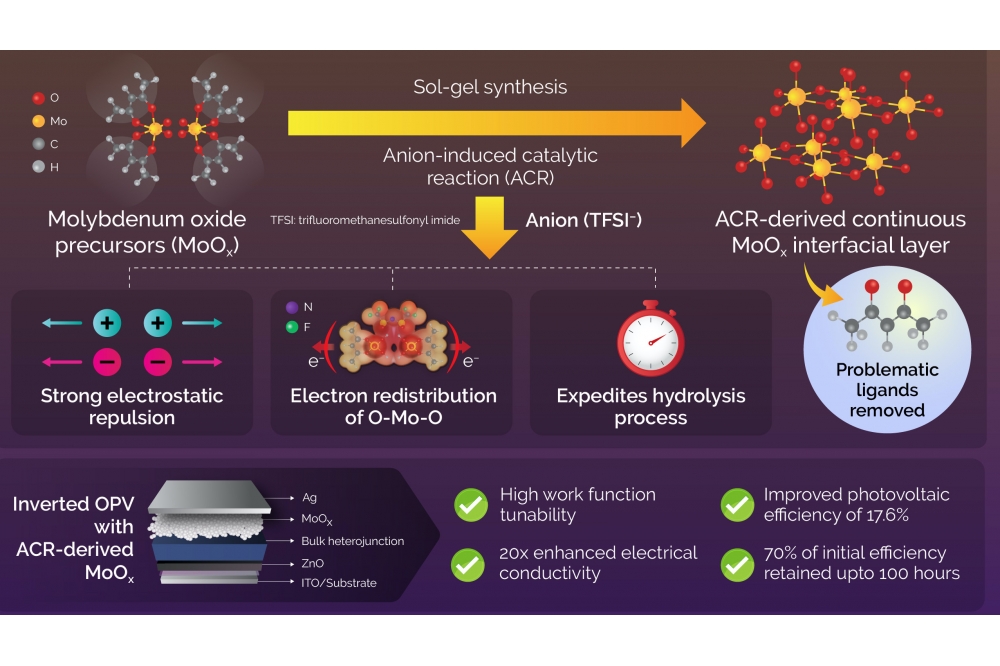Improving TMO organic photovoltaic performance

Korean team removes residual organic metal-binding ligands to boost electrical conductivity 20-fold
Organic photovoltaics with a transition metal oxide (TMOs) interface layer are emerging as a promising alternative to conventional silicon-based photovoltaics. However, their electrical properties are often affected by unwanted organic metal-binding ligands left behind in the TMO synthesis process.
Now researchers at the Gwangju Institute of Science and Technology in Korea have addressed this issue using a technique called anion-induced catalytic reaction (ACR), which removes the residual ligands, resulting in a 20-fold enhancement in electrical conductivity.
This study was published in Volume 32, Issue 35 of the journal Advanced Functional Materials on 25 August 2022.
The researchers have developed organic photovoltaics (OPVs) with transition metal oxide (TMO) thin-film interfacial layers as a cost-effective alternative to commercial silicon solar cells. OPVs are known for their excellent photochemical properties and low-cost mass producibility. However, the TMO layer often suffers from a degraded electrical conductivity owing to the presence of lingering organic metal-binding ligands generated during their synthesis. This greatly limits the OPVs from reaching their full potential.
Kwanghee Lee who led the team said: “While OPVs [organic photovoltaics] with TMO thin films are headed towards power conversion efficiencies as high as 19 percent, the organic metal-binding ligands left behind the after sol-gel synthesis act like a double-edged sword, helping with the formation of the TMO thin films but deteriorating their properties as well. So, we aimed to find a way to eliminate the unwanted ligands after the synthesis process.”
Accordingly, the team prepared a TMO thin film using an organic ligand-containing ionic compound and an MoOx-based precursor by introducing ACR alongside the hydrolysis and condensation steps that take place during the sol-gel method. X-ray analysis and density functional theory calculations revealed that ACR induced a strong electrostatic repulsion via low-level anions, which expedited the hydrolysis process and resulted in a quick removal of the organic-metal binding ligands at room temperature.
The team then prepared an inverted OPV configuration using the ACR-derived MoOx thin film to test its electrical properties. To their delight, they observed a 20-fold enhancement in the film’s electrical conductivity along with an excellent work function tunability compared to pristine MoOx. Further, the inverted OPV configuration showed 17.6 percent improved efficiency, with over 70 percent retention of the initial efficiency for up to 100 hours.
This novel strategy could not only ensure a superior light-to-electricity conversion efficiency required for commercialization but also enable energy-efficient mass production of next-generation OPV solar cells. “We strongly believe that the insights provided by our findings will open up new horizons in the production of large-area, wearable, flexible, and printable electronics,” concludes Lee.


































